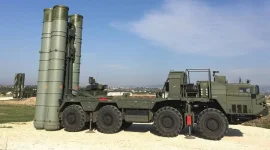- Views: 718
- Replies: 4

The Indian Army is set to significantly bolster its artillery capabilities with the introduction of Area Denial Artillery Munitions (ADM), developed by the Defence Research and Development Organisation (DRDO).
Lt. Gen. Adosh Kumar, Director General of Artillery, confirmed that trials for these advanced munitions will commence in 2025. This development marks a major step forward in India's efforts to modernize its armed forces and enhance its combat readiness.
ADMs are designed to neutralize enemy tanks, armored vehicles, and personnel over a wide area by deploying a barrage of sub-munitions. This capability will act as a "force multiplier" for the Indian Army, enabling it to effectively disrupt and destroy enemy formations, particularly in high-intensity conflict scenarios. The munitions are specifically tailored for area denial operations, aimed at preventing adversary forces from utilizing specific terrains or routes.
The munitions will be deployed using multi-barrel rocket systems (MBRS) like the indigenously developed Pinaka and the Russian-origin Smerch launchers, providing the army with the ability to deliver these devastating payloads deep within enemy territory.
The ADM warhead comprises several key components:
- Ejection Mechanism: A spring-based ejection mechanism, coupled with a Flexible Liner Shaped Charge (FLSC), ensures precise and effective dispersal of sub-munitions over the target area.
- Outer Ballistic Casing: A robust aluminum alloy casing, consisting of ogive and shell assemblies, protects the munitions during their flight trajectory.
- Sub-Munitions: Arranged in six layers within the warhead, these are designed for maximum impact against tanks and personnel, ensuring widespread damage across the target zone.
Furthermore, an electromagnetic fuze triggers detonation upon sensing a change in magnetic flux, such as when a tank passes over it, making it highly effective in anti-tank operations. An anti-tilt device and a self-destruct mechanism further enhance safety, mitigating the risk of unexploded ordnance on the battlefield.
The upcoming trials in 2025 will rigorously evaluate the ADM's performance under real-world conditions. Accuracy, effectiveness, and reliability across various combat scenarios will be assessed to validate its operational readiness and ensure it meets the Indian Army's stringent deployment standards.
This development underscores India's commitment to indigenous defence technology and its determination to maintain a cutting-edge military force capable of addressing evolving security challenges.





